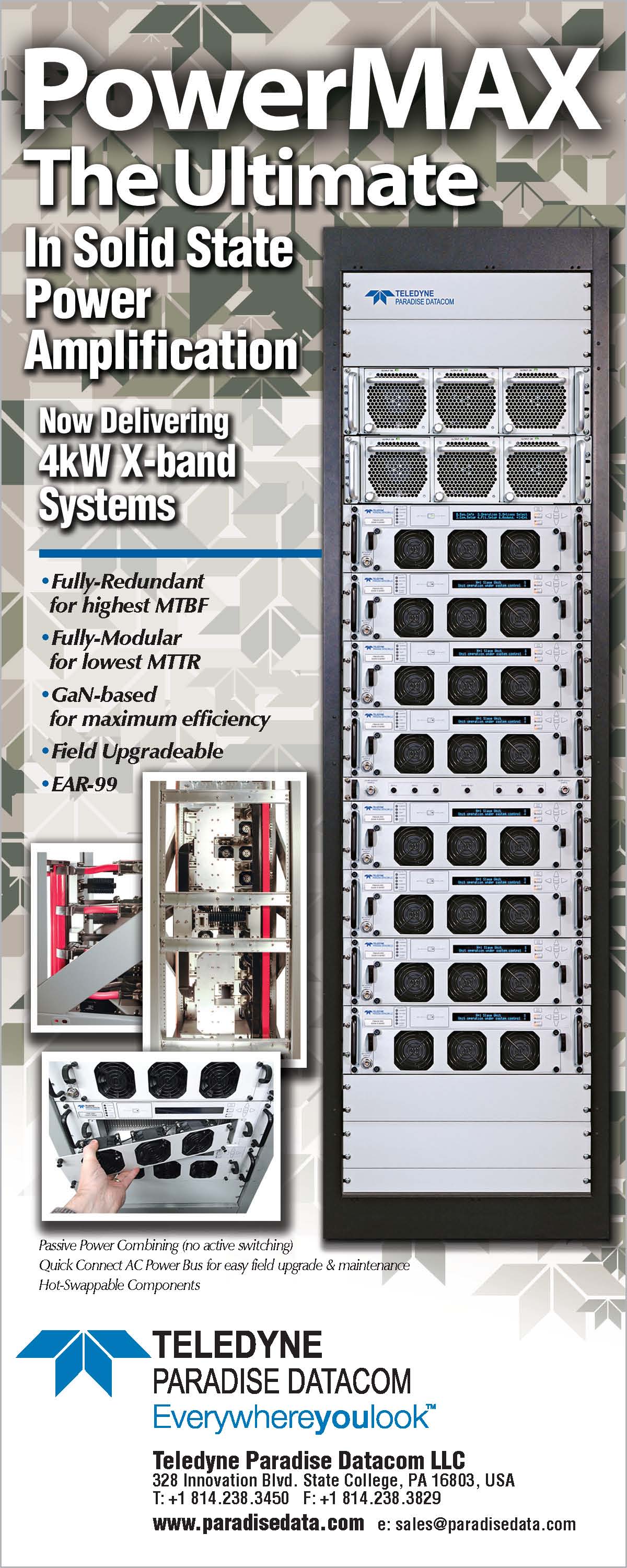Michael Gass is the president and chief executive officer for United Launch Alliance (ULA). In this role, Gass serves as the principal strategic leader of the organization and oversees all business management and operations.
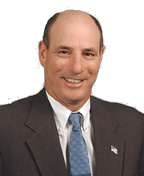
Before joining ULA, Gass served as vice president and general manager of Space Transportation for Lockheed Martin Space Systems Company, responsible for the Atlas, Titan, and Advanced Space Transportation product lines and all space launch activities. Prior to this assignment, Gass served as vice president, Atlas/Evolved Expendable Launch Vehicle (EELV) programs, for Lockheed Martin Space Systems and as vice president of the Atlas launch vehicle program. He was responsible for the Atlas II, III, and V launch vehicle programs and held additional senior operational and management positions.
Gass also served as vice president of Production and Materiel Operations with responsibility for all Lockheed Martin Astronautics launch vehicle and spacecraft programs. Before this position, he led the Atlas launch vehicle final assembly and tank fabrication areas through the transition phase of an accelerating production rate and relocating the operation from San Diego, California to Denver, Colorado.
Gass served in a number of management positions with General Dynamics for 14 years before its Space Systems Division was acquired by Martin Marietta, which merged with the Lockheed Corporation in 1995 to become Lockheed Martin Corporation. Gass held positions as program director for Atlas launch vehicles, director of facility services and strategic planning, and supervisory and staff positions in production operations. Gass contributed to the creation of the Atlas Centaur commercial business plan.
Gass also is a leader in the communities where ULA employees live and work. He serves on Colorado Gov. John Hickenlooper’s Education Leadership Council and co-chaired former Colorado Gov. Bill Ritter’s P-20 Education Commission—groups that have worked to improve the state’s educational system. He has volunteered for a number of non-profits, including Denver Rescue Mission, Mile High United Way and Project C.U.R.E., among others. Gass attended the Sloan Fellows Program at the Massachusetts Institute of Technology where he received a Master’s degree in management. He also graduated from Lehigh University with a Bachelor of Science degree in industrial engineering.
MilsatMagazine (MSM)
Your breadth of experience is most illustrative of an executive who lives and breathes the launch business. How did you initially decide to involve yourself in this industry?
Michael Gass
I am fortunate to work in an industry of great people, serving a great cause, and one in which I can thoroughly enjoy what I do. I had no great plan to join the space launch industry. After graduation, I was working for a consulting firm doing a project for the Navy in San Diego, California. My wife and I said San Diego “is the place you want to be” and a good friend was working for General Dynamics. I joined the company so we could enjoy Southern California.
MSM
Was it the joint venture between Lockheed Martin and The Boeing Company that promoted you to head up the new United Launch Alliance (ULA) effort?
Michael Gass
Yes, but prior to the start up of United Launch Alliance, I was the leader of Lockheed Martin’s Space Transportation business. I was significantly involved in the integration of the General Dynamics launch business when it was acquired by Lockheed Martin (formerly Martin Marietta). I would have to say my leadership experience in launch, as well as mergers and acquisitions enabled the board members to select me for the honor to lead the ULA team.
MSM
Why was the ULA JV conceived in 2006 and what was its primary commission?
Michael Gass
United Launch Alliance was formed in December 2006, largely in reaction to changes in the launch services marketplace. However, you have to go back further than that to understand the context.
(Photo: January 20th, 2011, was an important day for ULA—this was the company’s first launch of a Delta IV Heavy rocket from the west coast from Vandenberg AFB. A classified spy satellite for the U.S. National Reconnaissance Office (NRO) was boosted into space. Photo courtesy of ULA.)
Lockheed Martin and Boeing developed their respective families of launch vehicles (Atlas V and Delta IV) as part of the highly successful Evolved Expendable Launch Vehicle (EELV) Program. That program pursued development of a family of launch vehicles to meet all of the National Security Space (NSS) launch services requirements. That was the approach envisioned by the 1994 Space Launch Modernization Panel chaired by Gen. Tom Moorman.
EELV has been an incredibly successful program. The Air Force opted to keep two families of vehicles based on a belief the Commercial Communications Satellite Industry would be the predominant customer for the EELV Launch systems, which was shortly followed by this market not materializing. The end result was the NSS community got two new launch vehicle families, with higher reliability and higher mission flexibility than the heritage systems they replaced and still delivered savings that exceeded the target of 25 percent of the costs from these heritage launch systems.
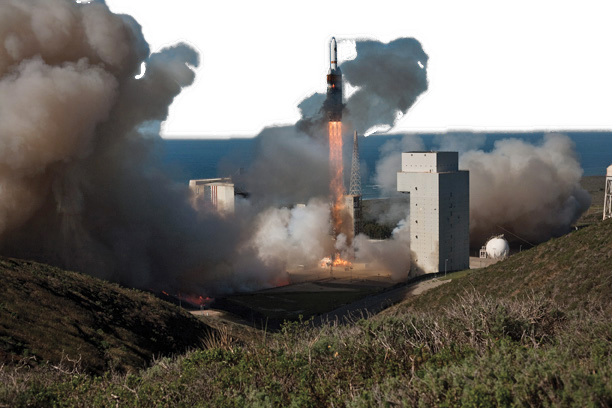
(Photo: January 20th, 2011, was an important day for ULA—this was the company’s first launch of a Delta IV Heavy rocket from the west coast from Vandenberg AFB. A classified spy satellite for the U.S. National Reconnaissance Office (NRO) was boosted into space. Photo courtesy of ULA.)
This lack of robust commercial launch market and significant delays to national security spacecraft launches due to developments in the late 1990’s and early 2000’s put significant financial strain on both EELV providers. Both companies were giving serious consideration to exiting the business. However, with the Air Force and National customers both in the midst of recapitalizing every satellite constellation simultaneously, the country couldn’t afford not to have a reliable launch service capability once the satellites were ready. Senior government officials identified the requirement for assured access to space, coupled with this environment and having two new launch systems ready to support the NSS requirements, but being utilized in an inefficient manner, the concept of ULA was formed.
The ULA merger offered to provide two launch systems, with one infrastructure and one team. It represented a significant savings opportunity which the U.S. Government has been the beneficiary. ULA invested in the necessary consolidation and made a contractual commitment of more than $150 million per year of savings as compared to separate company operations. ULA has delivered and continues to deliver savings that have exceeded those original estimates.
It’s interesting to note that the U.S. Government is again looking at establishing a similar market environment it found itself in just 10 years ago, specifically looking to establish competition in a launch market that will not support multiple launch companies in an efficient manner as defined in multiple studies performed over the last decade, with the intent of saving costs.
This new environment, which I have lived through before, could very easily negate any potential savings expected by having competition. As I have already described, ULA was formed explicitly to support the U.S. Government launch requirements and the men and women of ULA and I stand ready to compete but with relentless focus on meeting our customers’ critical mission needs as demonstrated with our unprecedented demonstrated reliability.
MSM
How did ULA successfully develop their family of reliable launch vehicles?
Michael Gass
Our parent companies really developed the Delta IV and Atlas V families of launch vehicles. The systems benefited immensely from more than 100 years (50 years each) of launch experience and learning from the combined heritage of Lockheed Martin and Boeing. Our continuing challenge is to continue the record of success, one launch at a time, while continuing to deliver the requisite cost efficiencies.
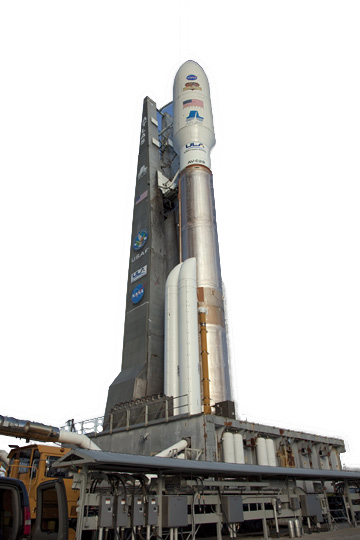
Photo: A ULA Atlas V 541 launch vehicle with payload on the launch pad. Photo courtesy of ULA.
The ULA journey has been about melding the different approaches, which were each successful, into a single company and culture that continued to drive costs down and reliably deliver to orbit our nation’s most critical space capabilities. The September launch of AEHF-3 on an Atlas V marked the 75th successful launch performed by ULA. We’ve deployed first of a kind missions for MILSATCOM (AEHF, WGS, MUOS), Missile Warning (SBIRS), GPS (IIF), a myriad of NRO missions, commercial missions, and some pretty astounding science missions for our NASA customers, including sending spacecraft to the radiation belts, the moon, Mars, Jupiter, and Pluto.
That success doesn’t happen by accident. It’s the result of the incredible efforts of more than 3,500 men and women dedicated to the idea that we can reliably launch the full spectrum of space capabilities on a dependable schedule, all while continuously driving for increased efficiency. At ULA, we call that Perfect Product Delivery. The evolution of ULA is an on-going journey with the most visible fruits of the endeavor being successful launches.
I’d also highlight that since ULA was formed in 2006, we’ve reduced our infrastructure by 30 percent, and our staffing by 25 percent since we were originally formed. We’ve consolidated our Atlas and Delta teams into one team launching two families of rockets. None of that happens by accident.
At ULA, we take pride not only in the improved capability and operational reliability, but improvements in underlying service to our customers. For example, we recently had a Navy MUOS launch delayed until Jan 2015 at the request of the customer. Our system of slot manifesting provided the ability to accelerate a GPS launch and a commercial launch. The inherent system flexibilities enabled us to accommodate all three missions within nine months of the first launch date, with little to no impact. That kind of manifest flexibility, coupled with the schedule dependability delivered by today’s EELV, is invaluable. Just a few short years ago that kind of change would have rippled through the entire manifest, driving cost increases to a multitude of satellite customers. We take a lot of pride in delivering our customers’ hardware reliably both when and where they need it.
MSM
You have witnessed, first hand, the evolution of the launch vehicle—looking forward, where do you see the market moving over the next few years?
Michael Gass
A number of new entrants are entering the market, and as evidenced by the International Space Station (ISS) cargo program, providing some much needed logistical support. Both SpaceX and Orbital Sciences have successfully visited the ISS now, and we understand more than most companies how challenging this business is. We have a lot of respect for those accomplishments.
Going forward, I don’t see a large increase in the market demand. Government budget challenges could slow the pace of the NSS market, but the potential growth in areas like commercial crew could fill in some of that demand. I see our NSS demand peaking in the next three or four years, and then falling back a little in the out years, about the time commercial crew starts to pick up. Of course, much of that projection will depend on budget deliberations, both NSS and NASA, and decisions on the extension of ISS service life into the next decade.
MSM
What imperatives will be responsible for the overall reduction of launch costs for the industry? What has ULA undertaken to help in this regard?
Michael Gass
The budget imperatives driving cost reduction are bigger than just launch. The country has budget and debt challenges that will impact defense and other parts of government across the board. Much of the focus on launch cost in recent years has to do with the overall space budget. The last decade was dominated by satellite development delays. Large development programs like SBIRS and AEHF drew most of the cost attention. Once those programs entered the production phase and the other large space programs were terminated (e.g.: Space Based Radar and TSAT), EELV was the biggest budget item on the cost radar. The transition to satellite production also resulted in an increase in the manifest as we deploy the newly developed satellite constellations. For the early years of ULA’s existence, we were only launching three or four satellites annually. Now we’re at a pace of about one a month. That makes us a larger cost target.
To address that, ULA has relentlessly focused on driving efficiencies, all the while mindful of maintaining the mission assurance essential when you’re orbiting critical national treasures in the form of NSS and NASA Science spacecraft. ULA Perfect Product Delivery focus is in driving reliability and efficiency in every process. With reliable processes, you have more speed and flexibility, lower cost—(Perfect Delivery) and it enables mission success (Perfect Product). The results of these efforts are illuminated in our performance metrics that show the improvement trends in less rework, less part shortages, less out of position work, and reduced mission integration cycle time.
Every element of our value stream has shown these improvements, all resulting in fewer resources required for each unit of output with greater overall reliability.
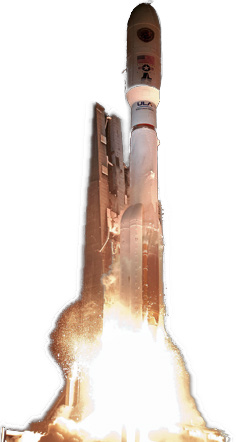
The launch of the AEHF-3 satellite on September 13, 2013, aboard a ULA Delta V launch vehicle. Photo courtesy of ULA.
We’re not alone in driving cost reduction. The Air Force is implementing a block buy strategy that will commit to 36 cores over the next five years and bring much needed stability into our supplier industrial base versus the inefficient practice of buying one or two launch services at a time. It’s kind of analogous to buying a case of soda at a warehouse store versus buying individual cans at your neighborhood convenience store; you get a much better unit price in bulk.
The Air Force also moved away from a cost plus award fee contracting approach focused on mission assurance, to one that has a fixed incentive for mission success and cost target fee sharing approach. This focused the reward and incentives on the right priorities and enables ULA to push back on non value added US Government requests. The Air Force’s strategy also allocates some of their projected missions for potential competition if a new entrant becomes certified in time to support mission launch requirements. ULA is pursuing a larger block buy of 50 cores so that we can deliver the larger economic order quantities savings to our core customer, NSS, while enabling us to market the remaining launch services to customers needing the reliability and dependability at a reasonable price that separates our product in the marketplace at a cost competitive price.
MSM
What will ULA attempt to accomplish as far as ensuring the military and government agencies are able to gain space for their critically needed payloads, which further the breadth of MILSATCOM to shorten missions and save warfighter lives?
Michael Gass
ULA, with our narrow focus on successfully launching critical USG spacecraft, including the broad spectrum of MILSATCOM capabilities, will focus on continuing to successfully place these critical assets into their proper orbit when the user needs them.
MSM
What are your thoughts regarding Hosted Payloads and how will such benefit the MAG and commercial environs?
Michael Gass
Hosted payloads are a subset of the disaggregation approach the Air Force is assessing as a way to provide more resilient capability. There’s really nothing new about hosting payloads, except the approach of hosting NSS payloads on commercial satellites, as successfully demonstrated with the CHIRP program. Like any rideshare, hosted payloads offer some promising benefits, but aren’t without their own challenges.
From a launch provider perspective, you’d like to see whatever marriage of payloads and buses happen early in the integration process to avoid late changes that can introduce uncertainty. But the payloads have to synchronize timing (launch window) and location (orbital parameters) with a suitable host, and do that in the context of the government procurement process. It’s one of those cases where the rocket science gets somewhat overshadowed by acquisition and political challenges.
Philosophically, the appeal of the approach is understandable. As the nation tries to lower the overall cost of space capabilities, you want to leverage every ounce of orbital capability, so any kind of rideshare, hosted payloads, secondaries, or dual launch has the potential to provide a major cost lever to help garner those cost efficiencies. The challenge will be synchronizing compatible missions early enough to allow the integration to occur without late disruptions in operational flows. ULA has a wide spectrum of capabilities on our launch families to support the incorporation of these approaches into the overall NSS space architecture.
MSM
Will ULA become involved in the multiple payload launches of small satellite “bundles,” such as nanos, picos, micros and so on? What are your insights into the future of small satellite launches and use?
Michael Gass
We’re very energized about the potential of dual launch and secondary payloads. We have an entire catalogue of rideshare capabilities and have demonstrated most of them. We’re developing a dual payload canister for our intermediate vehicles that will essentially allow us to launch two primary spacecraft on the same rocket. The first target is GPS III dual launch capability on Atlas, but the capability will allow for a multitude of dual launch pairings.
Dual launch is a subset of rideshare, and rideshare or secondary payloads isn’t something that’s new to us. We’ve launched multiple Iridiums and Globalstars on Delta II. We launched the Lunar Reconnaissance Orbiter (LRO) paired with the Lunar Crater Observation and Sensing Satellite (LCROSS) on Atlas V and employed an ESPA ring with both STP-1 and the Delta Heavy demo. If you dig back further in Lockheed and Boeing heritage, you’ll find more examples of dual launch/rideshare including a DSCSII/III stack and commercial JCSAT/Skynet on Titan. More recently, we orbited 11 cubesats last November on Aft Bulkhead Carrier (ABC) with the NROL-36 mission out of Vandenberg Air Force Bas in California and we’re slated to place another 12 cubesats into orbit with NROL-39 this December.
As our users evolve their space architectures to provide more resilient solutions that include smaller SVs, the military utility of those systems will increase, and I think you’ll see more emphasis placed on accommodating their needs as part of our launch services. From our prospective it takes longer to turn the overall space architecture within any given mission area than it takes to deliver the launch solutions. The space program has to evolve their ground and user segments in addition to their satellites, so they tend to have a longer acquisition cycle than the launch systems. But as they develop demonstrations for those potential capabilities, it’s imperative that we offer a full range of rideshare capabilities that provide an efficient, reliable, dependable option for deploying and testing those concepts.
MSM
ULA has had 75 successful launches to date. With this tremendous legacy, how will ULA continue to be innovative with their launch and support offerings?
Michael Gass
We don’t normally count the string of successes. In this business, each launch is critical, so we think of it as one launch in a row. Our team of great professionals will continue to relentlessly drive efficiencies in our infrastructure, our processes and our products while continuing the focus on mission success that serves our nation so well. Our recent efforts have emphasized span and cycle time reduction. We’ve done detailed assessments of our factory and launch site flows to find opportunities to consolidate processes and drive work out of our standard flows. Probably the most visible example was based on the reliability of our products, processes and infrastructure where we enabled the deletion of Wet Dress Rehearsals (WDR) for Atlas V at Cape Canaveral. The new construct saves about a week of launch flow each mission and significant costs in commodities and labor.
Given our launch rate for east coast Atlas and the maturity of the system, the WDR wasn’t really required anymore. Streamlining our production and launch cycles allows us to perform more missions, and to provide more confidence in our schedules. Our pursuit of Perfect Product Delivery has also garnered substantial improvements in quality across the board. Our key metrics on non-conformances and work traveled from the factory to the launch base have consistently seen below family, new record lows or zeros in our recent launches. That’s been another major factor in executing successfully and on time.
On the hardware side as with our processes, we continue to look for best practices. We continue to progress on developing Common Avionics that we’ll use for both our Atlas and Delta launch services, and we’re anticipating our first common RL10 upperstage engine, the RL10C, that will also support both families. In the longer term, we’ll continue to innovate and adapt to changing space architectures. Like any major aerospace company, we’ll dedicate a certain amount effort to nurturing long-term, high payoff efforts both in technologies for future product offerings and in our people to ensure we remain the leader in reliable and dependable launch services for our nation’s most critical NSS and space exploration capabilities. While I don’t see us straying from that core mission, we’ll continue evaluating contributing concepts and business cases that help us provide value to our customers.
MSM
Will we see ULA become more involved with commercial launches, especially for off-shore customers?
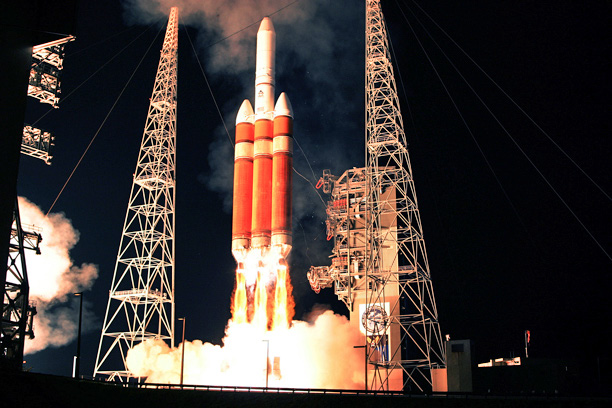
Photo: A ULA Delta IV Heavy launch vehicle lifts off.
Michael Gass
ULA and the commercial marketing groups of Lockheed for Atlas products and Boeing for Delta products will stay engaged in the commercial market. As an example, Lockheed’s Commercial Launch Services group recently won a Mexsat 3 mission that will launch on a ULA Atlas V.
MSM
An area of concern throughout the industry is that of properly trained personnel to fulfill crucial company positions. There is a current lack of STEM training in middle and high schools and at the college level—how important is it for the industry to promote STEM in the education system? Careers in the satellite and space industry? Is ULA involved in any such efforts?
Michael Gass
When United Launch Alliance was formed, we decided that one of core value tenants would be our support to the community. Our community support is focused on numerous STEM activities that are enabled by the company with funds and an incredible spirit of volunteerism by our employee team. We have programs that reach schools at every level to include partnering with universities on research projects. More than 20 ULA leaders sit on education related non-profit board of directors.
We have a world class intern program that helps us connect with college students from freshman year and on to ensure we keep our pipeline full. ULA has a unique advantage—we can share the excitement of launch—we’ve got smoke, fire, noise, and an element of danger to spark the attention of the young mind. Then we connect the dots of education to the jobs that make these missions happen.
MSM
Lastly, when you look back upon your career, what projects and/or missions truly bring a sense of satisfaction to you?
Michael Gass
The most difficult question. First, I have to say with the greatest of pride is how well the United Launch Alliance team came together. Partnering with our Chief Operating Officer, Dan Collins, we took two former competing teams, and integrated them, the numerous disparate processes, and consolidated infrastructure, and asked numerous people and families to relocate, all while continuing to deliver mission success. A great team was formed from some great heritages—I am humbled to be called their leader.
At ULA our mission statement is “Launching the quest for knowledge, peace and freedom.” I have had the honor and privilege to meet the end-users of the satellites that we put into orbit or send on journeys to explore the heavens. I take the greatest satisfaction in knowing that I played a small part in supporting their most noble missions. When you hear about how a satellite we launched helped save a life or when a rover lands on Mars—I know how much attention to detail was applied by so many people to make those miracles happen, and I am awestruck every day to be part of that team.


